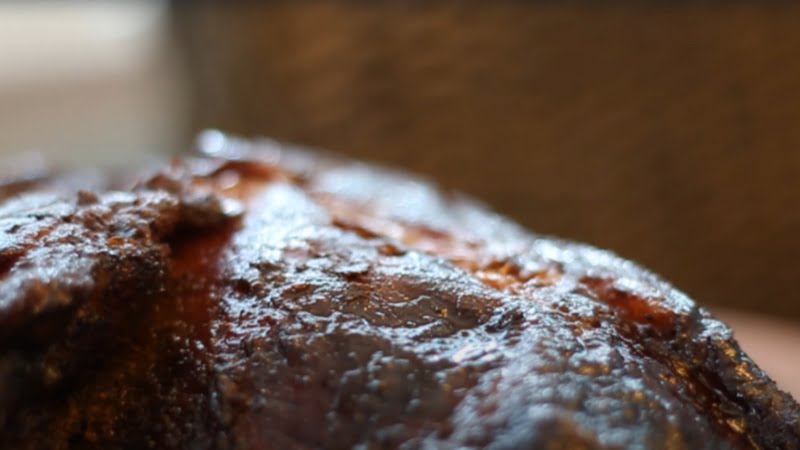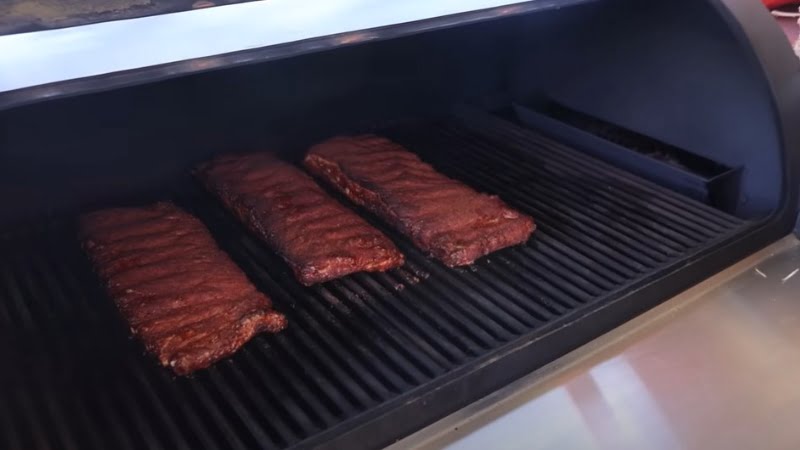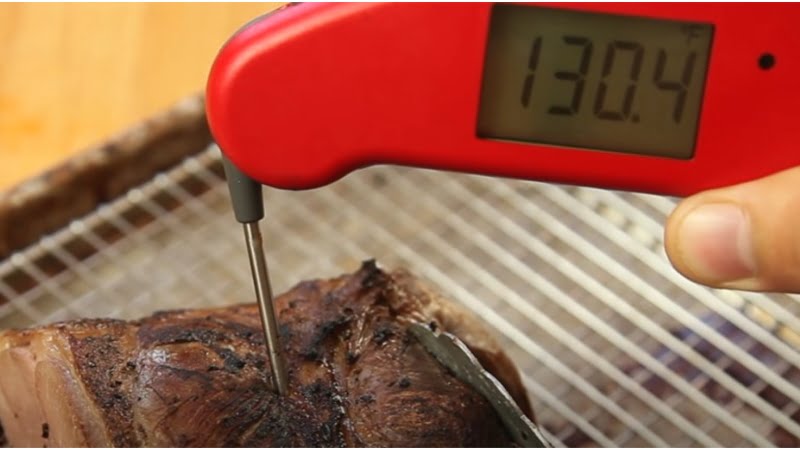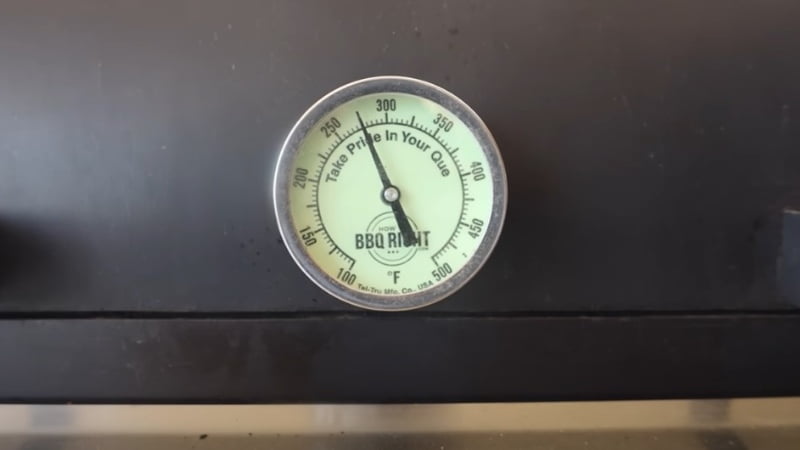Cooking pork ribs to perfection requires more than a good recipe and quality ingredients; the right temperature is crucial. When it comes to grilling or smoking ribs, understanding the importance of temperature is key. Not only does it adhere to the USDA recommendations, but it also ensures the best flavor and texture of your ribs.
Smoking Times And Pork Ribs Temperatures Chart
Understanding pork ribs’ appropriate smoking times and temperatures is the key to achieving mouthwatering, tender meat.
Temperatures chart
The pork ribs temperature chart provides a range of temperatures to help you achieve the desired doneness for your ribs. This includes ranges such as:
- Rare (120-125°F)
- Medium rare (130-135°F)
- Medium (140-145°F)
- Medium well (150-155°F)
- Well done (160°F and above)
However, it’s important to note that for ribs, a well-done level is generally not recommended as they can become tougher and lose their flavorful tenderness.

Using a pork ribs temperature chart can make your grilling experience easier and more predictable, leading to better-tasting ribs.
The USDA recommends that all pork is cooked to an internal temperature of 145°F, followed by a three-minute rest time. This is a crucial guideline to eliminate potential pathogens and ensure your ribs are ready to eat.
However, achieving tender, fall-off-the-bone ribs often requires reaching a higher internal temperature. For example, if you want to replicate the texture of perfect baby back ribs at 350 in the oven or pulled pork, you may want to aim for an internal temperature between 190°F and 203°F.
Always use a meat thermometer to ensure you’ve hit the right internal temperature. Insert the thermometer into the thickest part of the meat without touching the bone, and take note of the reading. Following these temperature guidelines will ensure that you cook your pork ribs just right every time.
Time-temperature relation for different types of pork ribs
Understanding the different cooking times and temperatures for various types of ribs is crucial for achieving mouth-watering results. This section breaks down the time-temperature relation for baby back ribs, spare ribs, and St. Louis-style ribs.

Baby back ribs
Baby back ribs, known for their tenderness and quick cooking time, are popular among grill enthusiasts. According to our pork ribs temperature chart, maintaining a steady grill temperature of 225°F is key. Under these conditions, baby back ribs should reach the proper internal temperature within 4 to 5 hours. Always measure the internal temperature at the thickest part of the ribs with a thermometer to ensure you’re hitting the ideal temperature to cook baby back ribs perfectly.
Spare ribs
Spare ribs are larger and meatier, requiring more time on the grill to reach the desired tenderness. The pork ribs temperature chart recommends keeping the grill temperature consistent at 225°F, with spare ribs typically taking around 5 to 6 hours to reach the proper pork ribs internal temperature. Remember to use a meat thermometer to verify that you’ve reached the proper temperature, ensuring deliciously cooked pork ribs every time.
St. Louis-style ribs
St. Louis style ribs are a variant of spare ribs, with the rib tips removed for a more uniform shape, allowing for more consistent cooking. Like other rib types, a steady grill temperature of 225°F is recommended, with the ribs usually reaching the proper internal temperature in about 5 to 6 hours.
In all cases, follow the USDA guidelines and allow the ribs to rest for three minutes after reaching an internal temperature of 145 degrees. However, if you’re aiming for that fall-off-the-bone texture typically associated with perfect ribs, target an internal temperature of around 190-203°F, which is the ideal temperature for pulled pork.
This rest period allows the juices to redistribute throughout the meat, contributing to a juicier, more flavorful rib. Following these temperature guidelines and using a meat thermometer will help you always achieve perfectly cooked pork ribs. Enjoy the process and your meal!
How To Know When Your Pork Ribs Are Finished
Determining when your pork ribs are done is an essential skill to master when smoking meat. The key to ensuring the pork ribs are cooked perfectly lies in maintaining a lower temperature, slow cooking them over a longer period, and vigilantly checking the internal temperature.

Here are some tips to help you determine when your ribs are done.
- Use a meat thermometer: A meat thermometer is essential when smoking ribs. Insert it into the thickest part of the rib, away from the bone, to obtain the most accurate reading. The USDA recommends a minimum temperature of 145 degrees Fahrenheit for pork but aims for around 190-203 degrees Fahrenheit for fall-off-the-bone ribs.
- Appearance and texture: When your ribs are finished cooking, the meat should recede about a quarter of an inch from the bones. The outside should develop a dark bark due to the slow cooking process.
- Perform a bend test: Using a pair of tongs, pick up the rack of ribs from one end. If the ribs bend and the meat’s surface slightly cracks, your ribs are done.
- Refer to the pork ribs temperature chart: This pork ribs temperature chart provides approximate cooking times and temperatures for different rib types. However, remember these times are not absolute and can vary due to factors like the ribs’ size, your grill or smoker’s precise temperature, and even weather conditions.
By following these guidelines, checking the internal temp regularly, and using this pork ribs temperature chart, you’ll be well on your way to serving perfectly cooked ribs every time. Happy grilling!
Importance Of Proper Internal Temperature
- Cooking assurance: The USDA establishes that for proper consumption, all cuts of pork, including ribs, need to hit an internal temperature of at least 145°F. This step is crucial to eliminate any unwanted microorganisms that might be present and prevent any foodborne concerns. It’s not just a matter of meeting a guideline; it’s about ensuring the well-being of those enjoying the meal.
- Flavor and texture: When you allow the ribs to cook slowly, reaching an internal temperature between 190-203°F, they become tender and absorb the smoky flavor from the grill or smoker. This slow cooking at a controlled temperature ensures that the connective tissues break down properly without drying out the meat, leading to juicy, rich ribs and fall-off-the-bone deliciousness.

Pork Ribs Temperature Chart: FAQs
Are pork ribs done at 180?
While pork ribs are technically consumed at 145°F, they haven’t yet reached their full flavor or tenderness potential. The ribs’ collagen, fat, and connective tissues need more time to melt and soften, typically between 180°F and 195°F. It’s at these temperatures that ribs become perfectly tender and flavorful.
Is it better to rest ribs covered or uncovered?
Ideally, it would be best to cover ribs with aluminum foil immediately after removing them from the grill or smoker. The foil helps maintain the heat and aids the final internal cooking, preventing the ribs from cooling down too rapidly during the rest period.
Can you overcook pork ribs?
Indeed, it’s possible to overcook ribs and other pork cuts, resulting in dry, tough meat. Low and slow is the recommended cooking method for ribs – they’re done when they’re done. Depending solely on cooking time isn’t always reliable, so it’s best to check the ribs’ internal temperature and tenderness.






![What To Pair With Quiche? 25+ Best Dishes [With Pictures]](https://www.edithsbistro.com/wp-content/uploads/2024/04/what-to-pair-with-quiche-160x90.jpg)
